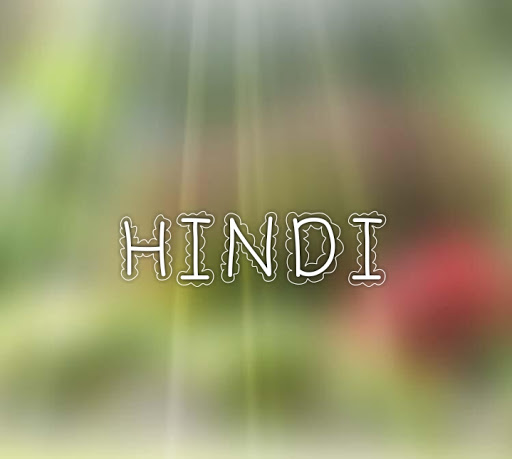HINDI
 |
The main language of India is Hindi. Hindi is an Indo- Aryan language which is also known as Khadi Boli or Khari Boli. Hindi is the primary tongue of about a third of India’s 2 billion people. Hindi is the fourth most spoken first language in the world. Outside of India, Hindi is also spoken in Bangladesh, Nepal, Australia, Bhutan, Canada, Belize, Germany, New Zealand, Philippines etc. You can easily image that a large majority of people speak Hindi.
The term Hindi
originally was used to refer to inhabitants of the Indo-Gangetic Plain. The Hindi
and Hindu terms are derived from the Sanskrit word Sindhu which is refers to
the river Indus. Another name of Hindi is Hindavi or Hindui was often used in
the past. Like other Indo-Aryan languages, Hindi is a direct descendant of an
early form of Vedic Sanskrit.
On 14th September, 1949, the Constituent Assembly of India adopted Hindi written in the Devanagari Script as the official language of the Republic India. That’s why, 14th September is annual celebrated as Hindi Diwas.
Part XVII of the
Indian Constitution deals with the official language of India. Article 343
states “The Official Language of the Union government shall be Hindi in Devanagari
script.” Article 344 refers to the
commission and committee of Parliament on official language of India. it was
envisioned that Hindi would become the sole working language of the Union
Government by 1965 with state governments being free to function in the
language of their own choice. Hindi is mostly spoken in the Northern part of
India along with English. Hindi is also the official language of 9 states and 3
Union Territories and additional official language of 3 states of India. At the
state level, Hindi is the official language of the following Indian states- Bihar, Chhattisgarh, Haryana, Himachal
Pradesh, Jharkhand, Madhya Pradesh, Mizoram, Rajasthan, Uttar Pradesh and Uttarakhand. Hindi is one of the additional official languages of West Bengal. Similarly, Hindi is gain the
official language status in the following Union Territories- National Capital Territory (Delhi), Andaman
and Nicobar Islands and Dadra and
Nagar Haveli and Daman and Diu.
 |
| Official languages of India |
Hindi and Urdu
were considered the same language but have evolved into separate dialects. As Hindi
is quite easy to understand for many Pakistanis, who speak Urdu, which as like
Hindi, is a standard register of the Hindustani language. Both Hindi and Urdu
have been used as literary languages starting in the 12th century. Under
the influence of the English language, Hindi and Urdu literature flourished
starting in the 18th century.
Both Hindi and
English are extensively used and each has its own supporters. Hindi is the main
communication link between people’s feelings.
There are many
regional varieties of spoken Hindi. Literary Hindi has 4 varieties – High Hindi,
Nagari Hindi, Literary Hindi and Standard Hindi. Dialects of Hindi also include
– Dogri, Marwari, Bhojpuri, Bundeli, Bagheli, Chhattisgarhi, Avadhi and Braj.
Hindi is highly
inflected language which utilizes prefixes and suffixes to form words and to
express grammatical relations. Due to the influence of Hinduism, Hindi derives
most of its high-level vocabulary from Sanskrit.
You can easily learn this language. Hindi is one of the major communication language in India.

Comments
Post a Comment